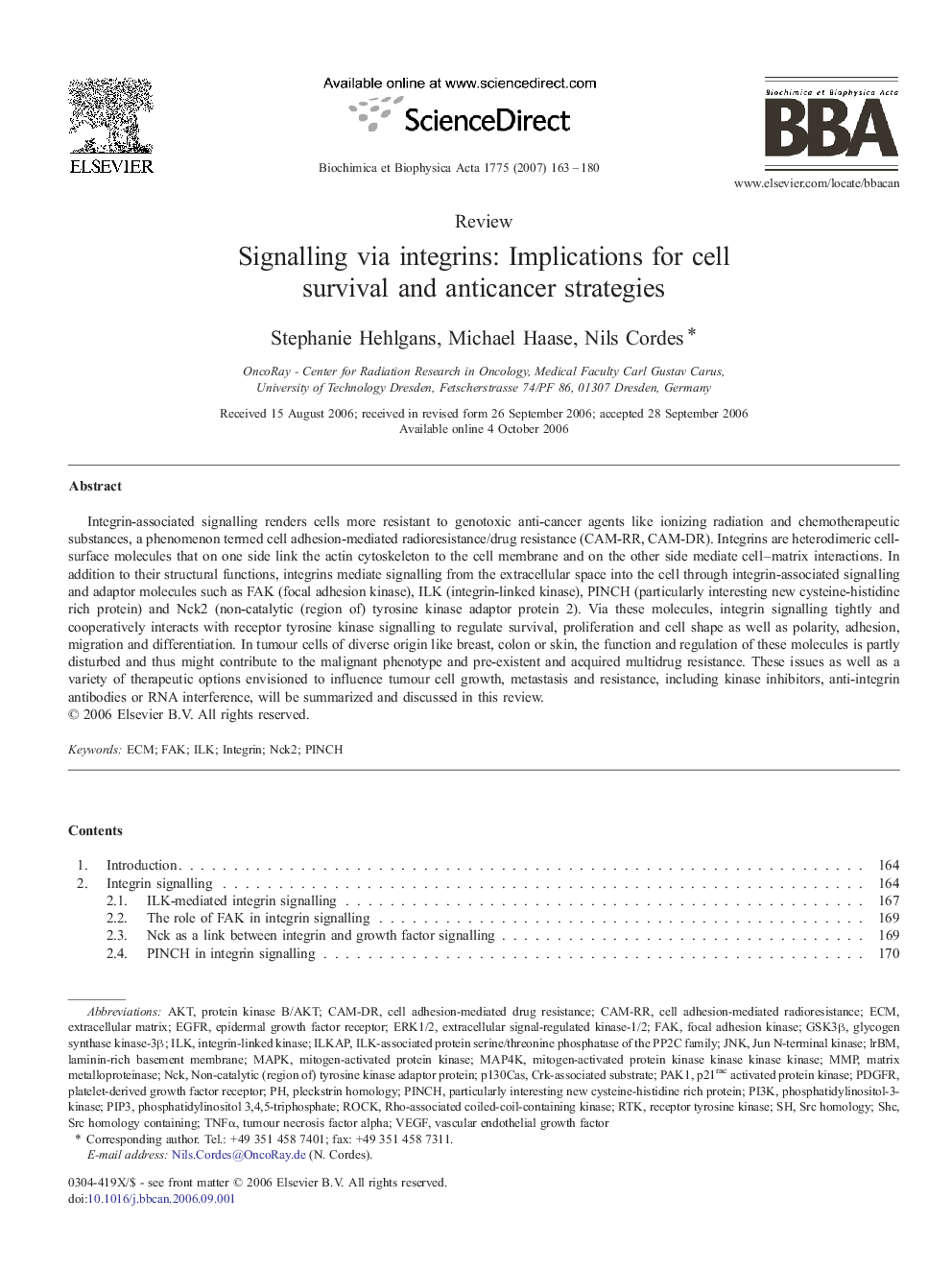| Article ID | Journal | Published Year | Pages | File Type |
|---|---|---|---|---|
| 2101196 | Biochimica et Biophysica Acta (BBA) - Reviews on Cancer | 2007 | 18 Pages |
Integrin-associated signalling renders cells more resistant to genotoxic anti-cancer agents like ionizing radiation and chemotherapeutic substances, a phenomenon termed cell adhesion-mediated radioresistance/drug resistance (CAM-RR, CAM-DR). Integrins are heterodimeric cell-surface molecules that on one side link the actin cytoskeleton to the cell membrane and on the other side mediate cell–matrix interactions. In addition to their structural functions, integrins mediate signalling from the extracellular space into the cell through integrin-associated signalling and adaptor molecules such as FAK (focal adhesion kinase), ILK (integrin-linked kinase), PINCH (particularly interesting new cysteine-histidine rich protein) and Nck2 (non-catalytic (region of) tyrosine kinase adaptor protein 2). Via these molecules, integrin signalling tightly and cooperatively interacts with receptor tyrosine kinase signalling to regulate survival, proliferation and cell shape as well as polarity, adhesion, migration and differentiation. In tumour cells of diverse origin like breast, colon or skin, the function and regulation of these molecules is partly disturbed and thus might contribute to the malignant phenotype and pre-existent and acquired multidrug resistance. These issues as well as a variety of therapeutic options envisioned to influence tumour cell growth, metastasis and resistance, including kinase inhibitors, anti-integrin antibodies or RNA interference, will be summarized and discussed in this review.
